Rocker shocked as cigarette prices soar, fuel underworld war in Australia
A photo snapped in Melbourne this week received a huge response. It highlights a problem nobody seems able to solve.
Retail
Don't miss out on the headlines from Retail. Followed categories will be added to My News.
When Mötley Crüe drummer Tommy Lee stopped by a Southbank 7-Eleven while touring in Melbourne in 2023, he was shocked by price of a packet of Marlboro Gold.
The US musician was not used to paying that much — at $62.99 for 25 cigarettes, the cost was at the time among the highest in the world.
He took to Instagram to share his receipt for four packets at $251.96 and left no question about his feelings with an accompanying middle finger emoji.
Fast forward two years and the cost keeps going up. A photograph of a price board at a Melbourne store over the weekend caused a stir all over again.
“I snapped this pic in Melbourne yesterday,” wrote Sydney-based tourism director Fiona Dalton on LinkedIn.
“It’s clearly been a very long time since I made my last purchase but I kid you not — I had to do a double take.”
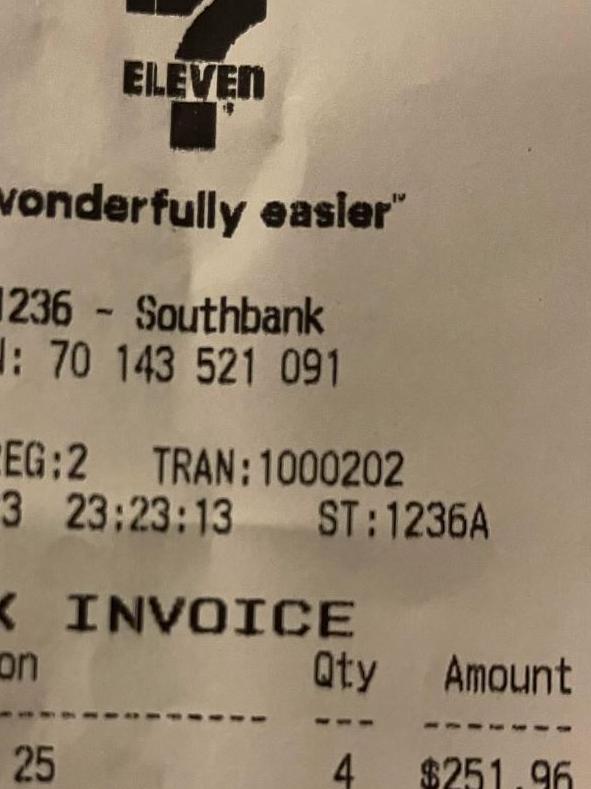
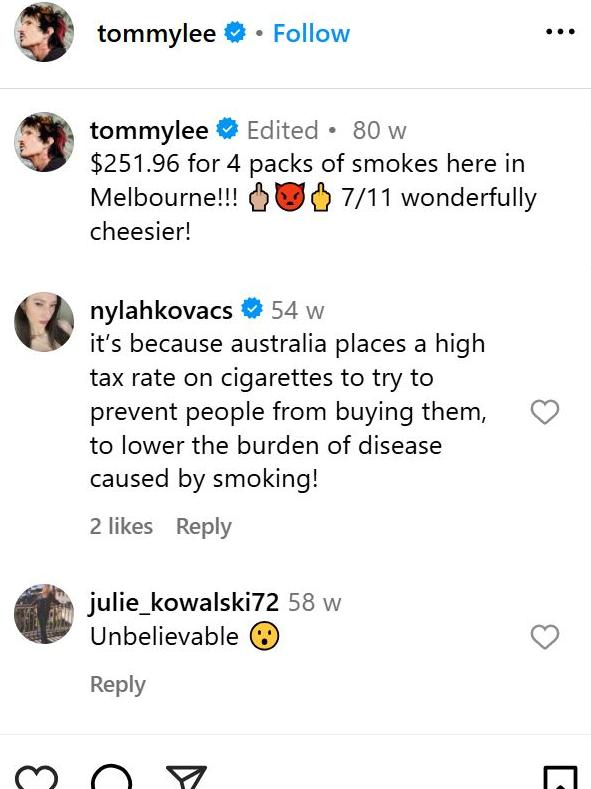
The board showed the cheapest packet of cigarettes cost $34.50 while others nudged the $100 mark.
“This is the cost PER PACKET of cigarettes from a 7/11 convenience store in the city,” Ms Dalton wrote.
“That’s $82.99 for a packet of Benson & Hedges. Although I’m not an advocate for the damages of smoking it’s worth considering what’s happening as a result of these prices.
“No wonder the “Tobacco Wars” will be the next Underbelly series. No wonder we have a drug epidemic in Australia. No wonder kids are vaping. No wonder the illegal tobacco trade is increasing. No wonder the underworld are killing each other on the streets of Sydney and Melbourne over deals gone wrong.
“This is insane. Has public policy gone too far?”
It’s a question that has does the rounds in Australia year after year.
Australia’s cigarette prices are sky-high because the Federal Government applies a tobacco excise to cigarettes. The tax per cigarette is roughly $1.40.
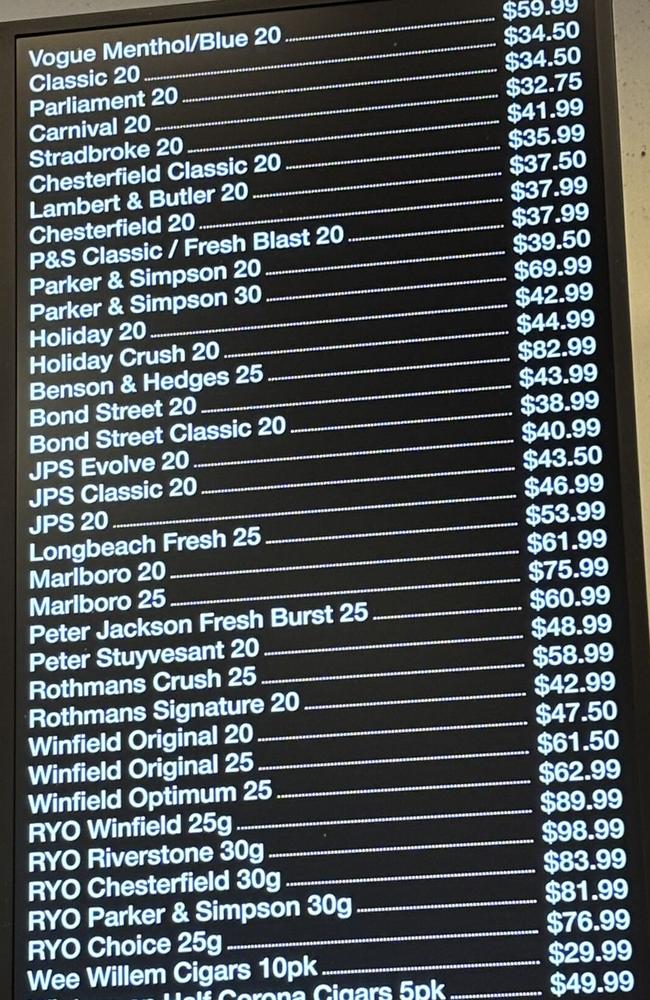
It means a packet of cigarettes in Australia, on average, costs more than $AU40 compared to about $AU13 in the United States.
In Europe and Japan, the cost of cigarettes is even lower.
The tobacco excise is indexed every March and September in line with average weekly ordinary-time earnings.
The thinking behind the policy is that higher costs will deter smoking. It’s in the interests of public health and aims to keep smokers out of hospital beds.
But it also earns the government massive revenue, though that is falling as Aussies turn to the illicit tobacco market.
Fei Gao, a Lecturer in Taxation from the University of Sydney and Andrew Terry, a Professor of Business Regulation from the University of Sydney, wrote recently about why the public policy has created a “diabolical problem for the government”.
“This financial year, the government expects to earn revenue from the tobacco excise of A$7.4 billion. That’s down sharply from $12.6 billion in 2022–23, and an earlier peak of $16.3 billion in 2019–20,” they wrote.
“The government expects this downward trend to continue. Australia’s heavy tobacco taxation has driven many consumers towards illicit cigarettes.
“But this is more than just a problem for government coffers accustomed to revenue from the tobacco tax.
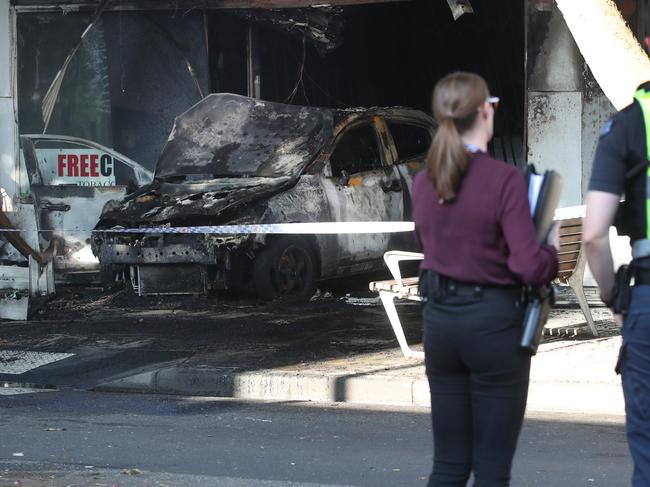
“It presents a major challenge for a public health policy that has long relied on increasing tobacco excise duty as its primary tool to reduce smoking.
“If government revenue from tobacco is falling, it isn’t because we aren’t trying to tax it.”
They wrote that “while legal cigarette prices are prohibitively high for some, illegal alternatives are widely available and significantly cheaper. That’s because these unregulated products bypass excise and GST entirely”.
“The estimated value of illicit tobacco entering the Australian market has soared, from $980 million in 2016–17 to more than $6 billion in 2022–23. Of this $6 billion, almost $3 billion entered the market undetected.”
The impact is being seen on the streets of Melbourne and Sydney where organised crime syndicates have been burning down rival businesses in what’s dubbed the “big tobacco wars”.
Hundreds of shops have been burned down in the last few years.
On LinkedIn, many joined the debate about exactly what to do.
“When you can pick up a pack for $15 with the same chemicals,” one person wrote.
“Meanwhile in Spain, I took this photo (of) the Marlboro box. Some were €4.65,” wrote another.
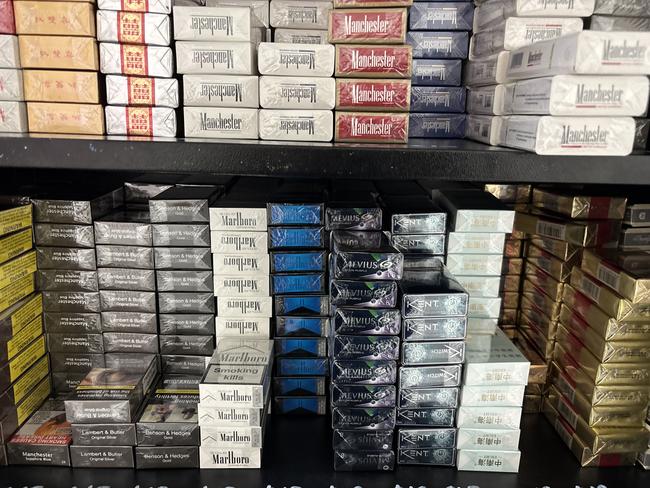
Latest estimates by the Australian Institute of Health and Welfare suggests 1.8 million Australians smoke daily.
A poll of more than 9000 news.com.au readers carried out last year showed 66 per cent of respondents thought cigarette prices were too high in Australia.
Author and economist Jason Murphy summed it up well.
“What we see now in Australia is that a pack of smokes is so expensive that normal people are willing to buy black market cigarettes. And organised crime is willing to supply.
“When a pack costs $12 at the shops, there’s not much profit in undercutting the supermarket giants. But when a pack costs $50 at the shops, well.
“Remember that tobacco and paper are very, very cheap to make, transport and sell. They store easily and don’t need to be refrigerated or kept food-safe. Anyone who has ever bought cigarettes in Asia knows the fair price of the actual product can be very low.
“So if you can buy a pack of cigarettes for 30 cents wholesale out of Asia and sell it under the counter illegally in Australia for $20, the profits are huge.
“Hence all the firebombing.”
Originally published as Rocker shocked as cigarette prices soar, fuel underworld war in Australia



